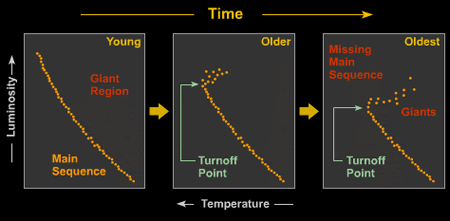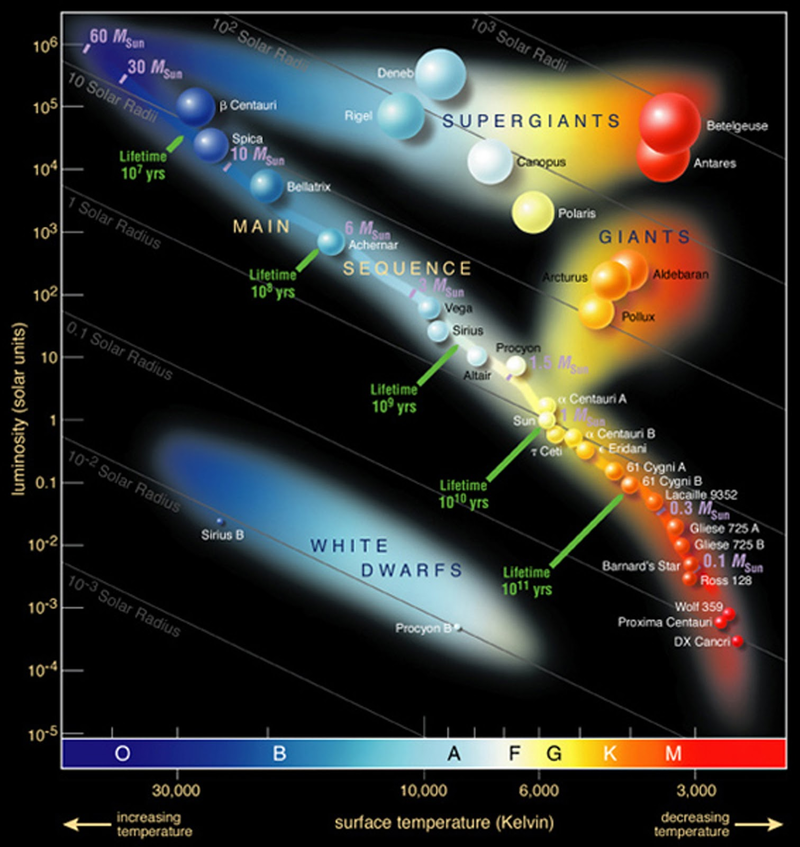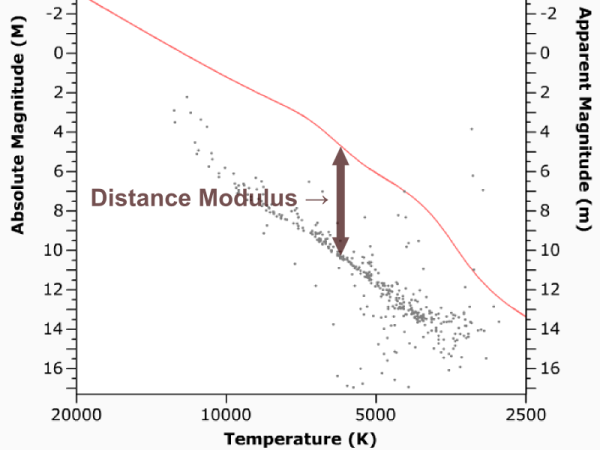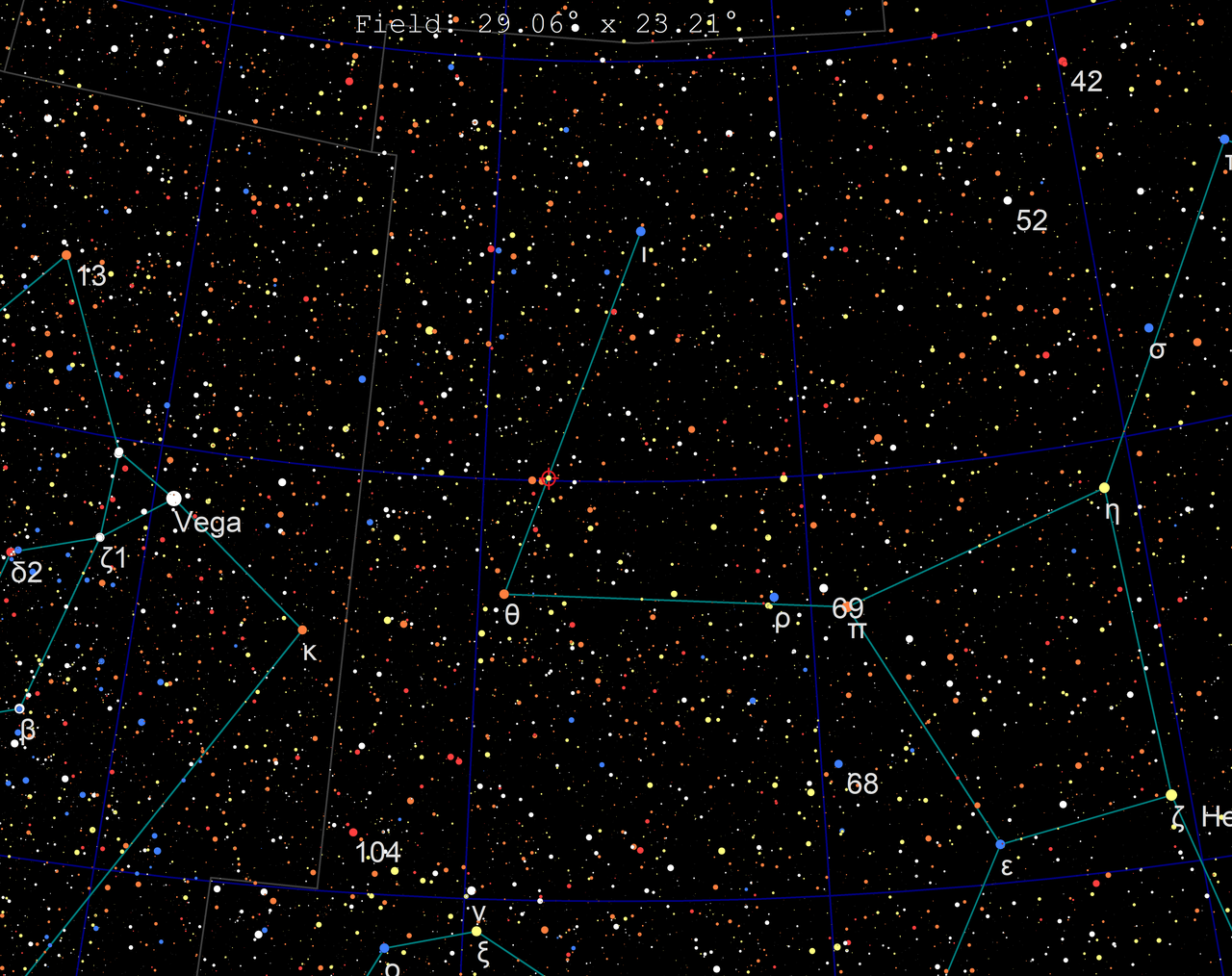The Sun did not form alone. Approximately five billion years ago, the Sun and hundreds of other stars coalesced out of a vast gaseous nebula somewhere within the Milky Way Galaxy. After their formation, these stars belonged to a bound grouping called a galactic or "open" star cluster. This cluster then traveled through the galactic star streams for millions of years. During the cluster's journey, interactions with other stars, clusters and gases pulled the stars away from its tenuous gravitational binding. Eventually, all the stars, including the Sun, left the cluster to follow their own orbits around the galactic nucleus. The Sun and its many stellar "sisters"* are now scattered throughout the galaxy. The most massive of them have already perished.
GALACTIC VS. GLOBULAR
Astronomers recognize two main star cluster types: galactic and globular. (We'll be discussing globular star clusters tomorrow.) Galactic star clusters are much smaller: tens or a few hundred light years in diameter. Their stellar populations number in the thousands and their ages rarely exceed 1 - 2 billion years.** Globular clusters are immense, with diameters often exceeding 1,000 light years. The stellar population of globulars generally exceeds 100,000. With ages often surpassing 10 billion years, globulars are also much older. Finally, galactic star clusters travel through the galactic arms while the globulars congregate in the galactic halo, a spherical region surrounding the nucleus.
GALACTIC CLUSTER LIFE CYCLE
A galactic cluster begins as a giant molecular cloud that experiences a disturbance powerful enough to precipitate a slow collapse of regions within it. These higher density areas gather into clumps that will, provided sufficient material is available, form proto-stars. These proto stars will transform into stars when thermonuclear reactions begin in their cores. The radiation pressure resulting from the star formation combined with violent outflows such as the T-Tauri wind will expel much of the cloud's gases so that only 1o-30% of the nebula's material will be incorporated into stars.
The stars within the cluster will initially be close enough to gravitationally bind it together. However, as the cluster moves through the galaxy, it will experience perturbing effects from other stars, clusters, and gaseous material as mentioned in the first paragraph. Eventually, the cluster will dissipate over the course of millions or hundreds of millions of years depending on the cluster's stellar population. The higher the population the more massive the cluster and the stronger the gravitational binding.
DETERMINING THE CLUSTER AGE
One can safely assume that the stars within a given cluster are the same age, even though the formation times of those may vary. When a cluster first forms,
its stars will all be along the main sequence. We remember that the main sequence is the band along the H-R Diagram extending between the upper left and lower right. The most massive O-B stars occupy the higher regions, the least massive M stars the lowest. Also recall that the more massive the star, the shorter the lifespan. The highest mass stars will remain along the main sequence for a few million years, while the least massive red dwarfs persist for more than a trillion years.
This correspondence between mass and lifetime enables astronomers to estimate the age of any star cluster. For instance, let's assume that we observe a very young cluster. We plot each of its stars on the H-R Diagram and see that they are all aligned along the main sequence. None of the stars within that young cluster had yet evolved off it. Let's next pretend that we're observing a cluster a few million years older. Again we plot those stars and discover that not all the stars fit along the main sequence. Some are to the right of the top most section which contains no stars at all. We conclude that the most massive stars have evolved off the main sequence while all the others remain. The cluster must be a few million years old. Finally, we observe an older cluster. When we plot the stars we find that many more of them have shifted off the main sequence. The cluster must be much older for those stars to have evolved.
Look at the H-R Diagram we first posted in Remote Planetarium 46. Notice the time labels along the main sequence. If the "cut off" of evolved stars occurs around the main sequence point occupied by beta Centauri in the graphic below, the cluster's age would be 10 million years. If, instead, the cut off is near the Sirius region, the cluster would be about one billion years old.
DETERMINING A CLUSTER'S DISTANCE
It might not surprise you to know that yet again we find ourselves using the H-R Diagram. Determining a galactic cluster's distance involves a process called main sequence fitting. We know that absolute magnitude values are aligned along the H-R Diagram's vertical axis. A star's absolute magnitude measures its intrinsic brightness. If we plot the cluster's stars along the H-R Diagram, we will form at least a section of the main sequence. By observing the stars directly, an astronomer can know the stars' apparent magnitude. By comparing the apparent magnitudes of the stars with the absolute magnitudes listed on the H-R Diagram, astronomers can determine the distance through the distance modulus equation (see Remote Planetarium 42).
Although complications arise if the cluster is older because less of the main sequence remains for comparison, the main sequence fitting method has proven to be quite a reliable distance determination method for galactic star clusters.
More than 1,100 open star clusters have been catalogued in our galaxy. (The closest one, the Hyades, is approximately 150 light years away). Astronomers estimate that the entire galaxy might contain more than 12,000 such clusters. As these clusters move through the Milky Way, they will gradually disperse and their component stars will join the billions of other stars currently following independent paths through the galaxy.
Tomorrow, we move from the galactic to the globular star clusters.
*Considering how scattered our stellar sisters have become, would it be at all possible to find them? Well, astronomers have found one already: HD 162826, a star within the constellation Hercules. Although it is relatively close at a distance of 111 light years, HD 162826 is slightly fainter than the dimmest stars visible to the unaided eye.
The Sun's first identified sibling: HD 162826 Located within the constellation Hercles, HD 162826 was the first star positively identified as being one of the Sun's siblings, defined as the stars that formed with the Sun about 4.5 billion years ago. It is possible that the Sun might have more than a thousand "siblings" at different locations within the Milky Way Galaxy. At a distance of 111 light years, HD 162826 is likely the closest sibling.
Although astronomers have found one, the Sun's siblings might well number in the hundreds or even more than a thousand. How can those lost sisters ever be located? We know that in 2014 an astronomical research team from the University of Texas at Austin determined that HD 162826 was a sibling based both on its chemical composition and by tracing back its orbital trajectory as it moved around the galaxy. A gaseous cloud from which the Sun and its siblings arose had a consistent chemical composition so that each star that formed within it would be chemically similar. Astronomers can ascertain this chemical similarity through spectral analysis of these stars. In particular, they look for relative abundance of rare elements such as Barium. It is likely that propelled remnants from a supernova (explosion of a super massive star) both enriched the Sun's birth cloud and induced the gradual collapse precipitating the star formation. These remnants would contain a set amount of the heavier elements which the "metal-poor" cloud would have lacked prior the supernova particles' arrival. As a consequence, stars born out of a specific nebula would be stamped with a particular spectral signature that would, in theory, distinguish them from non-sibling stars.
The Galactic Archeology with Hermes (GALAH) survey aims to observe more than one million stars so as to determine their individual "DNA profile." The aim, in part, is to properly identify some of Sol's siblings: to know where the Sun's sisters have strayed. These observations will also lend astronomers some insights into the motions within the galaxy, itself: as leaves in a wind give us information about the direction and velocity of air streams. We don't know how many of the Sun's lost siblings we'll find through these observations. We do know, however, that they lurk out there somewhere..
**Open cluster half lives range between 150 - 800 million years. A half life in this instance refers to the time required for half of the cluster's stars to move away from the cluster.
To subscribe or unsubscribe from the Daily Astronomer:
https://lists.maine.edu/cgi-bin/wa?SUBED1=DAILY-ASTRONOMER&A=1.jpg%22&N=Muse_Urania,_by_Le_Sueur_(detail).jpg)
.jpg%22&N=Muse_Urania,_by_Le_Sueur_(detail).jpg)



